Sydney garden pavilion by AR-MA built from thousands of components
Robotically-produced Corian panels were joined to laser-cut mirrors to create the curves of this pavilion in the garden of Sydney's Sherman Contemporary Art Foundation, designed by Australian studio AR-MA (+ slideshow).
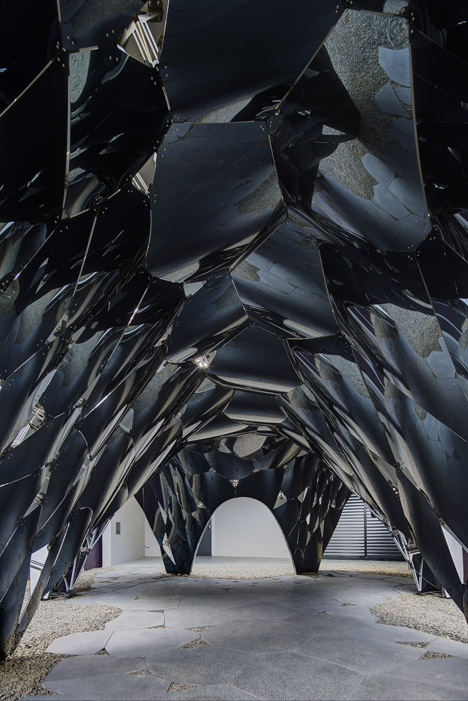
AR-MA's Trifolium design was the winning entry to the second edition of the annual Fugitive Structures architecture competition, which invites emerging or mid-career architects to propose designs for a structure that employs cutting-edge technologies.
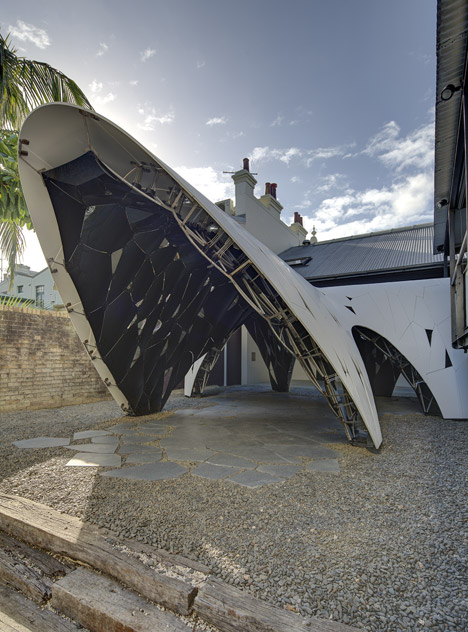
Trifolium is a self-supporting shell structure with a three-pronged shape, which creates a curving canopy that can be used as a meeting place, an auditorium or a stage for events.
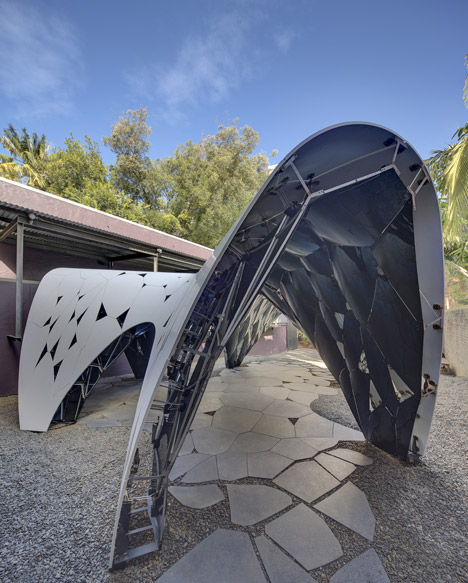
The exterior shell comprises 152 pieces of robotically cut Corian – a manmade solid surface material that is heated and shaped to create the unique pieces.
Each Corian panel has been fixed to a corresponding piece of curved black mirror-polished stainless steel using 452 unique steel brackets.
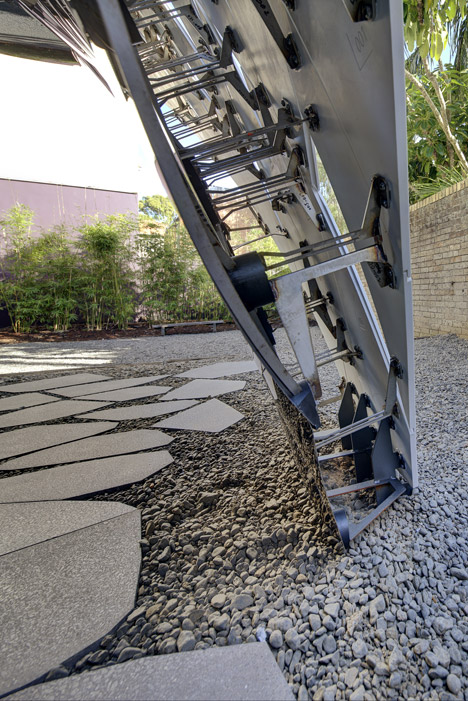
The stainless steel panels are individually curved to produce an internal surface that creates distorted reflections.
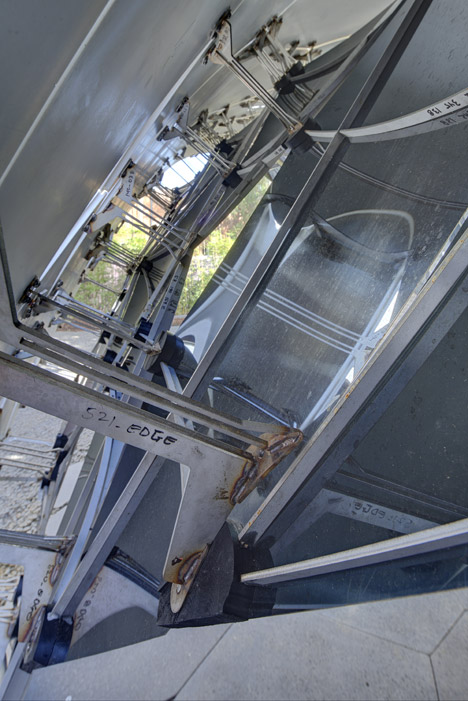
"There are thousands of components and each one is unique," said AR-MA director Robert Beson. "The only common elements are the bolts and screws that hold it together, so really it's a logistical project of tracking and managing all of the information and material."
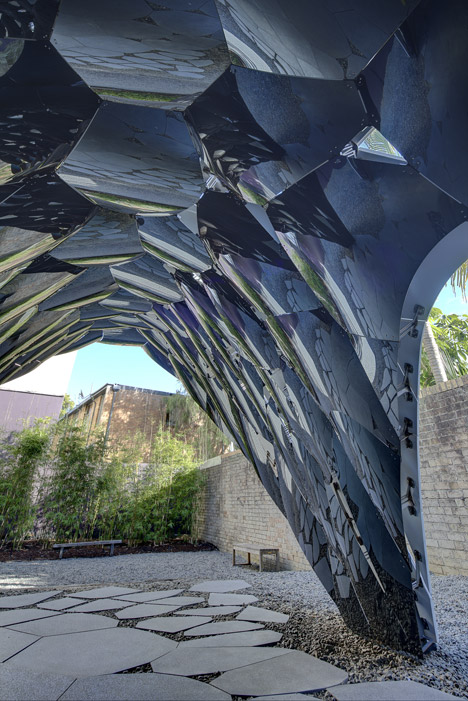
AR-MA worked with global engineering firm Arup to develop the form of the pavilion, using structural analysis software to monitor the stiffness and strength of the materials and components.
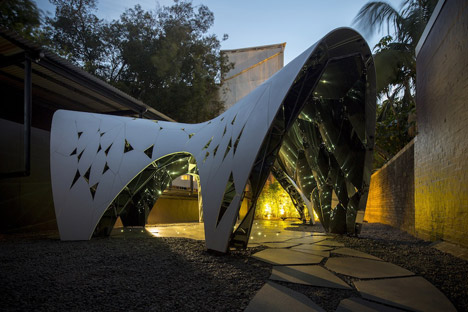
The structure was entirely prefabricated off-site and assembled in just eight days. The 19-millimetre-thick Corian panels are rebated and were slotted together around a scaffolding frame to produce a rigid and watertight surface.
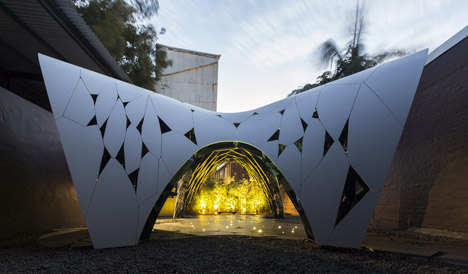
"Rather than bring a whole bunch of sticks and sheets to site that you then chop up and make into a building, everything is designed to efficiently use materials and resources off-site to be produced to a higher standard and then brought to site and put together," said Beson.
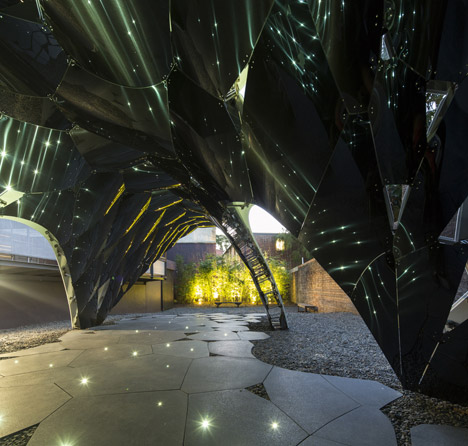
Fibre-optic cables offer lighting within the concrete paving slabs laid underneath, which have an irregular pattern that echoes that of the steel panels, and they create reflections on the structure's stainless-steel inner skin.
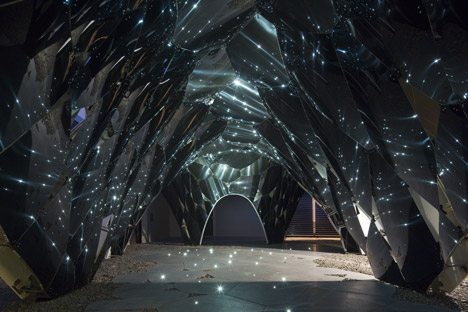
Last year's inaugural edition of the Fugitive Structures competition saw architect Andrew Burns install a charred timber structure with curved walls leading to a secluded space in SCAF's garden.